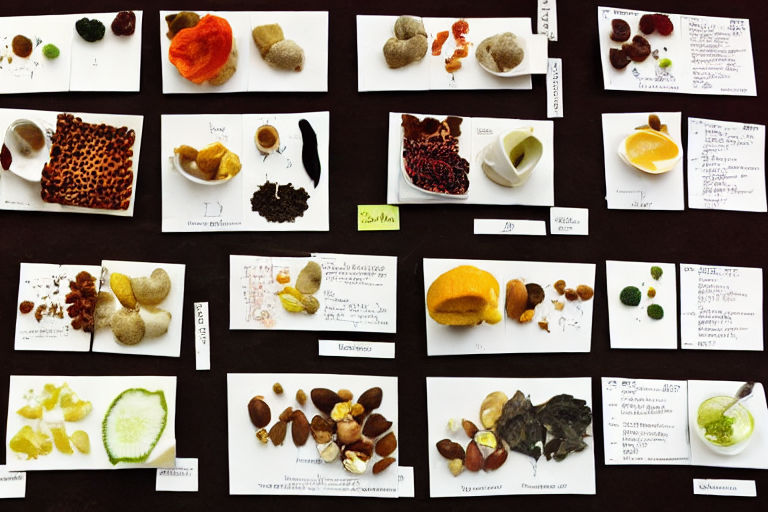Tasting Notes Demystified: Understanding the Language of Food and Beverage Sensory Evaluation
Sensory evaluation of food and beverage is an important process that enables you to describe both the flavours and aromas of different products. This process is crucial in the world of culinary arts, for chefs, sommeliers, and bartenders alike. Sensory evaluation is a complex process that requires a common language to describe the different tasting notes. Beyond just identifying the individual tastes in food and drink, the process of sensory evaluation involves using a standardized vocabulary to describe the intensity and quality of those flavours.
What Are Tasting Notes?
In its simplest form, a tasting note is a description of the flavor and aroma profiles of a particular food or beverage product. Tasting notes typically describe the different flavours and aromas that you can sense when evaluating a product. Tasting notes can be found on the packaging of food and beverage products, and also on some restaurant menus.
The Importance of Tasting Notes in Sensory Evaluation
Tasting notes are an essential element of sensory evaluation because they provide a standardized language that can be used to describe the different flavours and aromas of a product. For food and beverage professionals, being able to describe the sensory characteristics of a product aids in creating organized menus and wine lists, as well making selections when buying products. Tasting notes are also important tools for consumers, who can use them to guide their own purchasing decisions and understand the products they are consuming.
Understanding The Vocabulary Used To Describe Tasting Notes
Describing the flavor and aroma profiles of a product requires the use of specialized vocabulary. Some of the most common terms you will find in tasting notes include:
- Fruitiness: refers to a fruity taste or aroma detected in food or beverage. This could include notes of citrus, berry, or tropical fruit.
- Floral: refers to a floral scent or flavor detected in food or beverage. This could include notes of roses, lavender, or jasmine.
- Spiciness: refers to a spicy flavor or aroma detected in food or beverage. This could include notes of pepper, cinnamon, or clove.
- Herbaceousness: refers to an earthy or herbaceous flavor or aroma detected in food or beverage. This could include notes of grass, dried herbs, or green tea.
- Woodiness: refers to a woody or earthy flavor or aroma detected in food or beverage. This could include notes of oak, cedar, or mushroom.
- Body: refers to the weight, texture, and viscosity of a product. This could be described as light-bodied, medium-bodied or full-bodied.
- Acidity: refers to the level of acidity in a product. This could be described as low, medium, or high acidity.
- Tannin: refers to a compound found in some beverages that cause a dry, puckering sensation in your mouth. This could be described as low, medium or high tannins.
Conclusion
Tasting notes are an essential tool for describing the sensory characteristics of food and beverage products. Understanding the vocabulary used to describe these flavours and aromas can help you create an organized sensory evaluation process, whether you're a professional in the culinary arts or a consumer looking for more information. With this knowledge, you can more confidently taste new products and make informed purchasing decisions.



